#Megapodiidae
Text

Australian Brushturkey (Alectura lathami), family Megapodidae, Eastern Australia
Photograph by Jan Wegener
2K notes
·
View notes
Text
Uncharismatic Fact of the Day
Most birds take at least a few weeks to learn how to fly, if not longer. The maleo, however, is a bird far ahead of the game. This species buries its eggs deep underground, and after the chicks hatch they dig their way to the surface and are able to fly almost immediately.
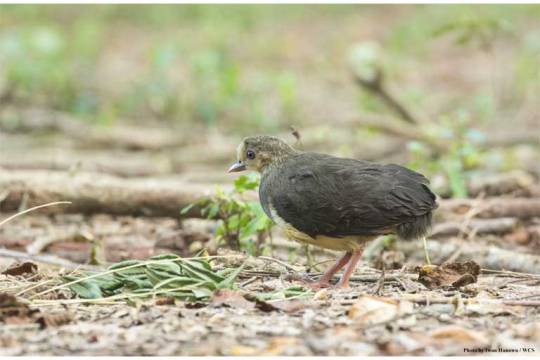
(Image: A newly hatched maleo () chick by Iwan Hunowu)
If you like what I do, consider leaving a tip or buying me a ko-fi!
806 notes
·
View notes
Text
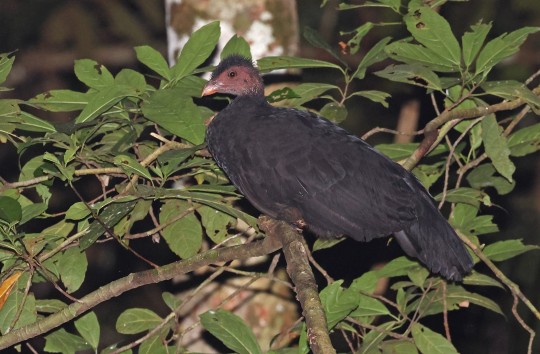
[2539/11080] Collared brushturkey - Talegalla jobiensis
Also known as: red-legged brushturkey
Order: Galliformes
Family: Megapodiidae (megapodes)
Photo credit: Robert Hutchinson via Macaulay Library
#birds#Collared brushturkey#Galliformes#Megapodiidae#Talegalla#birds a to z#red-legged brushturkey#undescribed
47 notes
·
View notes
Text
Australian Brushturkey (Alectura lathami)

"They make huge piles of leaves and branches as nests. Once I saw a solitary male in a wildlife park and the keepers said he was really annoying because he kept re-arranging the leaf litter which made keeping the footpaths clean a huge pain lol!"
"Small gardener-dinosaurs! And these guys are just out here existing with zero parental care."
"Despite its name and their superficial similarities, the bird is not closely related to American turkeys, nor to the Australian bustard, which is also known as the bush turkey."
Australian Brushturkey are a megapode found on the Eastern edge of Australia, typically living in rainforests or wet sclerophyll (eucalyptus-heavy) forests- though they've more recently been moving into cities such as Brisbane and Sydney.
As megapodes, the most unique feature of these birds is the way they incubate and "raise" their young- which is to say, they don't raise them at all! Megapodes are a family of birds that create mounds of rotting vegetation for their eggs to incubate within, much like crocodiles and alligators. The males will tirelessly defend their mounds, checking the temperature with their bills and doing their best to attract females to lay her eggs within. This is the only care they give their young, however. Brushturkey eggs are quite large, and their chicks are born precocial, or "fully developed". Unlike other precocial species, like chickens or ducks, megapode babies can fend for themselves within hours of hatching, and don't need parental guidance in order to make it in the world. Which is good news, since mom invests no care in her young and dad is only concerned with keeping his nest mound in perfect condition!
Sources:
Image Source: eBird (Chris Barnes)
#Alectura lathami#Australian brushturkey#Gweela#megapode#australian wildlife#Australian birds#megapodiidae#in memoriam (joke)
8 notes
·
View notes
Photo

Maleo (Macrocephalon maleo)
© Andrew Spencer
752 notes
·
View notes
Photo

Australian brush-turkey (Alectura lathami) at Cairns Botanical Gardens in Australia
Sheau Torng Lim
86 notes
·
View notes
Photo
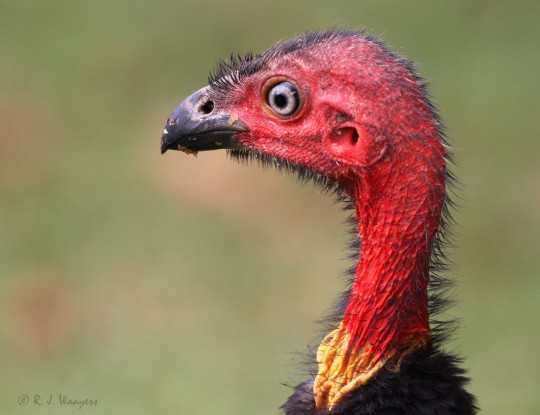
Australian brushturkey (Alectura lathami)
Photo by Robyn Waayers
#fave#australian brushturkey#gweela#alectura lathami#alectura#alecturini#megapodiidae#galliformes#galloanserae#neognathae#aves#theropoda#archosauria#sauropsida#reptilia#tetrapoda#vertebrata#chordata
58 notes
·
View notes
Photo

Talegalla fuscirostris by Markus Lilje
#bird#birds#animal#animals#biology#nature#wildlife#fauna#Galliformes#Megapodiidae#Talegalla#Talegalla fuscirostris
78 notes
·
View notes
Photo
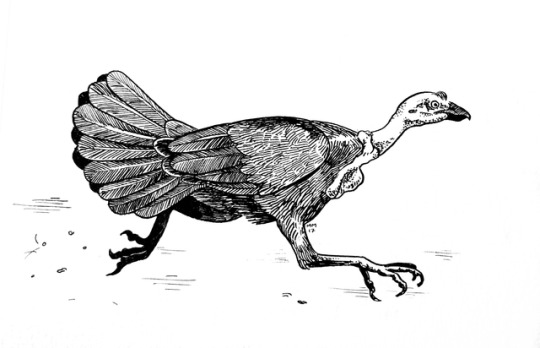
Inktober Day 11: Run
On the field site, there was an Australian Brushturkey (Alectura lathami) named Harold who would sprint across the parking lot when we looked like we were eating lunch.
#inktober#birblr art#australia#australian brushturkey#brush turkey#alectura lathami#alectura#megapodiidae#galliformes#artbysnailkites#art
61 notes
·
View notes
Note
Hey, hey, what the fuck is a bush turkey???
It's a bird.
Its a megapode.
It's a menace. (2)

Australian Brushturkey aka Gweela (Alectura lathami), family Megapodidae, found in eastern Australia
photograph by Marta Jochym
289 notes
·
View notes
Text
Uncharismatic Fact of the Day
Sea turtles are famous for the perilous way they start their lives, but they're not the only ones that face peril from day one. Australian bushturkey chicks have to dig themselves out of their nest, which is usually 1-1.5 m (3.2-4.9 ft) deep, and are capable of flight only a few hours after emerging! This is an important skill to pick up quick, as most predators find the idea of a defenseless baby bird too good an opportunity to pass up; only 1 in every 200 eggs laid survives to adulthood.

(Image: A tasty snack Australian bushturkey chick (Alectura lathami) by Dr. John Martin)
If you like what I do, consider leaving a tip or buying me a kofi!
#Australian bushturkey#Galliformes#Megapodiidae#megapodes#incubator birds#game birds#game fowl#birds#uncharismatic facts
174 notes
·
View notes
Text

[447/10,977] Australian Brushturkey - Alectura lathami
Order: Galliformes
Family: Megapodiidae (megapodes)
Photo credit: J J Harrison
125 notes
·
View notes
Photo

Australian brushturkey or Gweela
Alectura lathami
The Australian brushturkey or Gweela is a common, widespread species of mound-building bird from the family Megapodiidae (incubator birds) found in eastern Australia.
It is a large bird with a prominent, fan-like tail flattened sideways, and its plumage is mainly blackish, but with a bare red head, and a yellow or purple wattle. The males' wattles become much larger during breeding season, often swinging from side to side as they run. The males' heads and wattles also become much brighter during the breeding and nesting season.
The brushturkey is a clumsy flyer and cannot fly long distances, only taking to the air when threatened by predators or to roost in trees at night and during the heat of the day.
photograph by JJ Harrison | Wikimedia CC
via: https://en.wikipedia.org/wiki/Template:POTD/2022-01-26
154 notes
·
View notes
Text
Macrocephalon maleo

By Ariefrahman, CC BY-SA 4.0
Etymology: Great Head
First Described By: Müller, 1846
Classification: Dinosauromorpha, Dinosauriformes, Dracohors, Dinosauria, Saurischia, Eusaurischia, Theropoda, Neotheropoda, Averostra, Tetanurae, Orionides, Avetheropoda, Coelurosauria, Tyrannoraptora, Maniraptoromorpha, Maniraptoriformes, Maniraptora, Pennaraptora, Paraves, Eumaniraptora, Averaptora, Avialae, Euavialae, Avebrevicauda, Pygostaylia, Ornithothoraces, Euornithes, Ornithuromorpha, Ornithurae, Neornithes, Neognathae, Galloanserae, Pangalliformes, Galliformes, Megapodiidae
Status: Extant, Endangered
Time and Place: Within the last 10,000 years, in the Holocene of the Quaternary

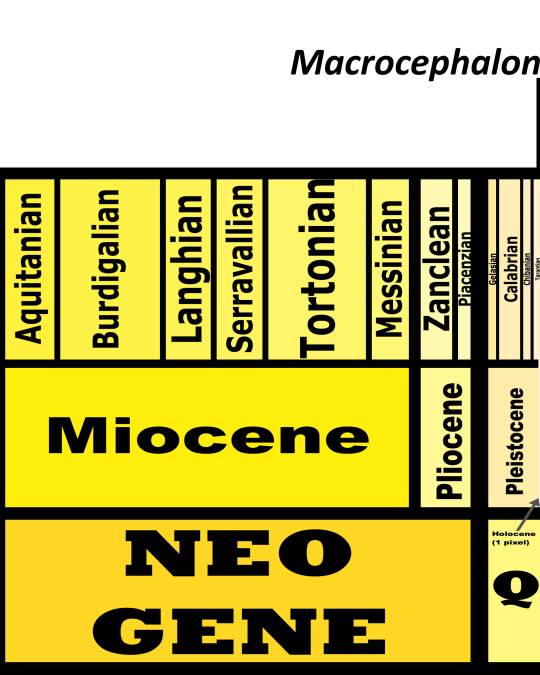
Maleos are known entirely from the island of Sulawesi in Indonesia
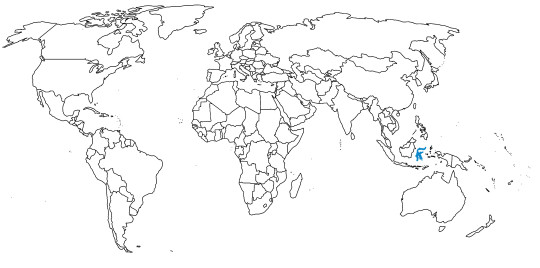
Physical Description: Maleos are large landfowl, reaching 55 centimeters in length. These are large, round birds with skinny necks and odd looking heads - they have black crests on the tops of their heads that flop over the back, and little red bands at the top of their beaks. The beaks of Maleos are thick and grey, and they have primarily brown heads. Their backs are black, as are their wings and tails, but their bellies are white; and they have long, grey legs. In addition to all of this, Maleos have orange rings around their eyes that are extremely noticeable. The young tend to have black heads in addition to these features.
Diet: Maleos feed on a variety of fruits, seeds, insects, and other invertebrates.

By Stavenn, CC BY-SA 3.0
Behavior: Maleos are Megapodes, which means they are one of the only groups of dinosaurs that don’t take care of their young! Instead, Megapodes make giant mound-nests which use geothermal energy and solar-heat in order to incubate the eggs. Maleos are monogamous, mating with only one individual per season (and potentially per life, but they aren’t very well studied), and the pair builds the nest mound together, lays the eggs, and leaves. Around ten eggs are laid per year, though some may lay as many as thirty. The eggs incubate for nearly three months; when the young hatch, they rapidly lose a lot of weight, before beginning to chow down on as much food as possible and growing rapidly for the next two months. They reach sexual maturity themselves at around two years of age. They can live for up to 23 years.
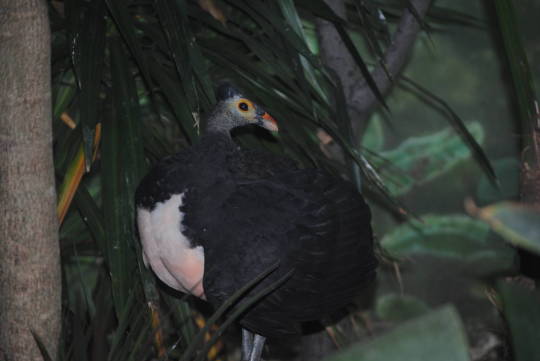
By BronxZooFan, CC BY-SA 4.0
These are noisy birds, making a wide variety of calls including brays, rolls, and quacking - to the point of sounding rather surreal in some situations. They tend to spend most of their time foraging with their mate, walking around and gathering the food off of the ground. They do not migrate, but they also do move around the island each year, not sticking in one place or placing their nests in the same sites from year to year.
Ecosystem: These megapodes live primarily in lowland and hill jungle, going to the beaches for their breeding or in forest clearings with extensive amounts of sand. They usually roost in trees high off of the ground. Maleos are preyed upon by humans, pigs, monitor lizards, and crocodilians.

By Ariefrahman, CC BY-SA 4.0
Other: Maleos are endangered, with only potentially 14,000 individuals left with a rapidly declining population. The reasons for this seem to be due to human exploitation, egg hunting by humans and introduced mammalian predators, and extensive habitat loss. This is also illegal, as much of that lost habitat is protected - as are the eggs of this species, which are being collected in the thousands. Since they are a delicacy, and not a food source staple, this practice must be condemned and hopefully further regulation can help to increase Maleo populations.
~ By Meig Dickson
Sources Under the Cut
Elliott, A. & Kirwan, G.M. (2019). Maleo (Macrocephalon maleo). In: del Hoyo, J., Elliott, A., Sargatal, J., Christie, D.A. & de Juana, E. (eds.). Handbook of the Birds of the World Alive. Lynx Edicions, Barcelona.
Foley, James A. (March 9, 2013). "Rare Maleo Eggs Successfully Incubated And Hatched At Bronx Zoo". Nature World News. Nature World News.
#Macrocephalon maleo#Macrocephalon#Maleo#Megapode#Dinosaur#Factfile#Birds#Dinosaurs#Galloanseran#Galliform#Landfowl#Pheasant#Quaternary#Birblr#Australia & Oceania#Omnivore#terrestrial tuesday#biology#a dinosaur a day#a-dinosaur-a-day#dinosaur of the day#dinosaur-of-the-day#science#nature
97 notes
·
View notes
Photo

Maleo (Macrocephalon maleo)
© Andrew Spencer
7 notes
·
View notes
Text
Omaha Nebraska Jazz Festival
Omaha, Neb., is a small town on the Missouri River near the Iowa border where the Omaha National Historical Park is located. It is known as the "Garden City," with its abundant natural resources and historic sites. A stop on a Lewis & Clark National Historic Trail, it is known for its pioneering history, museums, art galleries and cultural facilities.
The Henry Doorly Zoo spearheads preservation activities and features a large cat enclosure as well as a tropical forest, rainforest and desert habitat. The Zoo features four or five species of felines and their hybrid descendants, including African Lions, Wild Cats, Leopard Geckos, Mule Deer, Raccoons, Rats, Mink, Chinchillas, Skunks, and Skunk Frogs. It houses approximately 1,500 animals, including all of the continent's rare felines and hybrids.
The Omaha Zoo houses an array of mammals, birds, reptiles, amphibians, corals and fishes. Other popular attractions include Dinosaur Land, which displays fossilized dinosaur remains and a large exhibit of ancient marine life.
The Omaha Zoo features a unique collection of animals that belong to the Megapodiidae family. The Omaha Zoo also features a large display of marine life, including sharks, turtles, octopus, and more. The Omaha Museum boasts of an impressive display of fossilized fish and prehistoric fossils. Other popular exhibits at the Omaha Museum include the National Maritime Museum, which showcases the rich history of shipping and ocean transportation through time.
The Omaha Nebraska Museum houses numerous artifacts, paintings and other artifacts that illustrate the early days of the state of Nebraska and the area's early settlers. The Nebraska State Museum houses a wide collection of artworks, artifacts and historical documents that represent the past of the state of Nebraska. The State Historical Society and Museum displays the history of Nebraska.
The Omaha Nebraska Jazz Festival showcases the best of traditional jazz, fusion jazz, bluegrass, and soul music, blues, Latin and gospel. The Jazz Festival includes traditional Jazz, R&B, gospel, and blues as well as modern and contemporary styles. Music is available for public entertainment throughout the day.
The State Museum houses a beautiful collection of Native American artifacts, including Native American pottery and sculptures. and pottery. The State Historical Society of Western Nebraska's collections includes several Native American artifacts from the early days of the region, as well as artifacts from the later period. The historic museum also features many artifacts of various Native American groups such as Omaha Indians, Creoles and others.
Omaha Nebraska is an interesting place to visit for people who love history and culture. Omaha is located along the banks of the river as well as the Mississippi River, which form a connection between the two states. The State Museum and Omaha Nebraska Jazz Festival can be enjoyed by people of all ages.
People who love nature will enjoy the Omaha Nebraska Zoo. The Omaha Nebraska Zoo features a variety of animals and birds. The zoo also features a large animal farm where people can observe different animals up close.
The Omaha Nebraska Museum houses many different types of artifacts and artworks from the Omaha Nebraska region. One exhibit in particular features artifacts from the Omaha Nebraska Art Museum. The Omaha Nebraska Art Museum displays paintings, pottery and other artifacts from Omaha Nebraska. The Omaha Nebraska Art Museum displays a wide variety of Native American art, including drawings, paintings, pottery, and sculptures.
The Omaha Nebraska Jazz Festival also offers free admission. The Omaha Nebraska Jazz Festival features traditional Jazz, Bluegrass and Soul music. The Omaha Nebraska Jazz Festival also features musical entertainment all day.
Omaha Nebraska is an exciting place to visit for individuals and families. Omaha Nebraska is known to have some of the best music festivals and events available on the planet. Omaha Nebraska hosts one of the largest jazz festivals in the United States.
0 notes